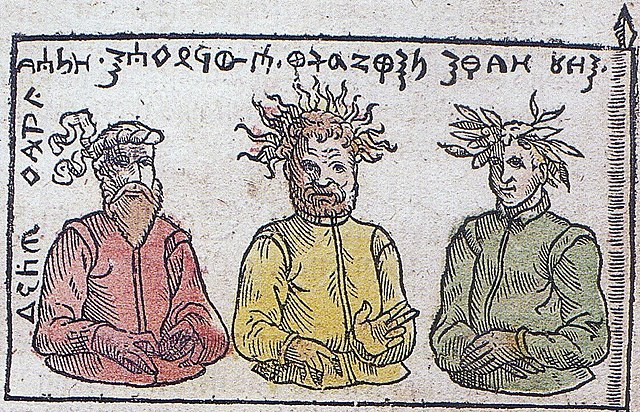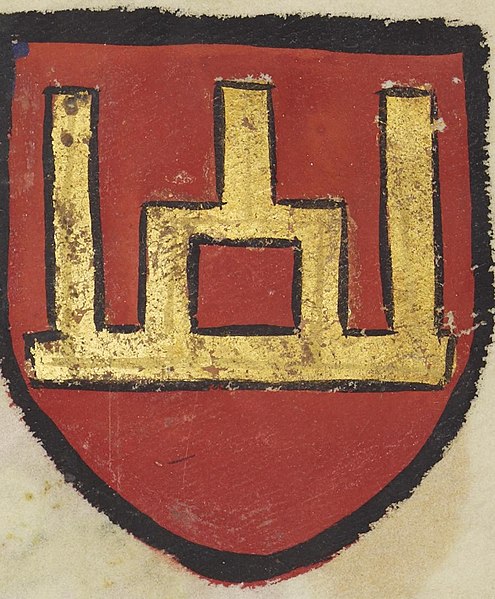Coat of arms of Lithuania
The coat of arms of Lithuania is a mounted armoured knight holding a sword and shield, known as Vytis. Since the early 15th century, it has been Lithuania's official coat of arms and is one of the oldest European coats of arms. It is also known by other names in various languages, such as Waykimas, Pagaunė in the Lithuanian language or as Pogonia, Pogoń, Пагоня in the Polish, and Belarusian languages. Vytis is translatable as Chase, Pursuer, Knight or Horseman, similar to the Slavic vityaz. Historically – raitas senovės karžygys or in heraldry – raitas valdovas.
One of the oldest colorful Vytis (Waykimas) depiction, 14th century
The Third Statute of Lithuania of 1588, featuring Vytis
Baltic mythology pagan Gods: Peckols, Perkūnas, Potrimpo
Seal of Mindaugas
The Columns of Gediminas or Pillars of Gediminas are one of the earliest symbols of Lithuania and its historical coats of arms. They were used in the Grand Duchy of Lithuania, initially as a rulers' personal insignia, a state symbol, and later as a part of heraldic signs of leading aristocracy.
Columns of Gediminas as drawn in an armorial by a Portuguese herald in the Council of Constance in 1416
Coat of arms of Trakai Voivodeship with standing warrior and the Columns of Gediminas from the Codex Bergshammar, dating to ~1435.
Coat of arms of Lithuania Vytis (Waykimas) with Columns of Gediminas, painted in the 15th century Wernigerode Armorial. Attributed to Vytautas the Great.
Seal of King and Grand Duke Augustus III, 1738








